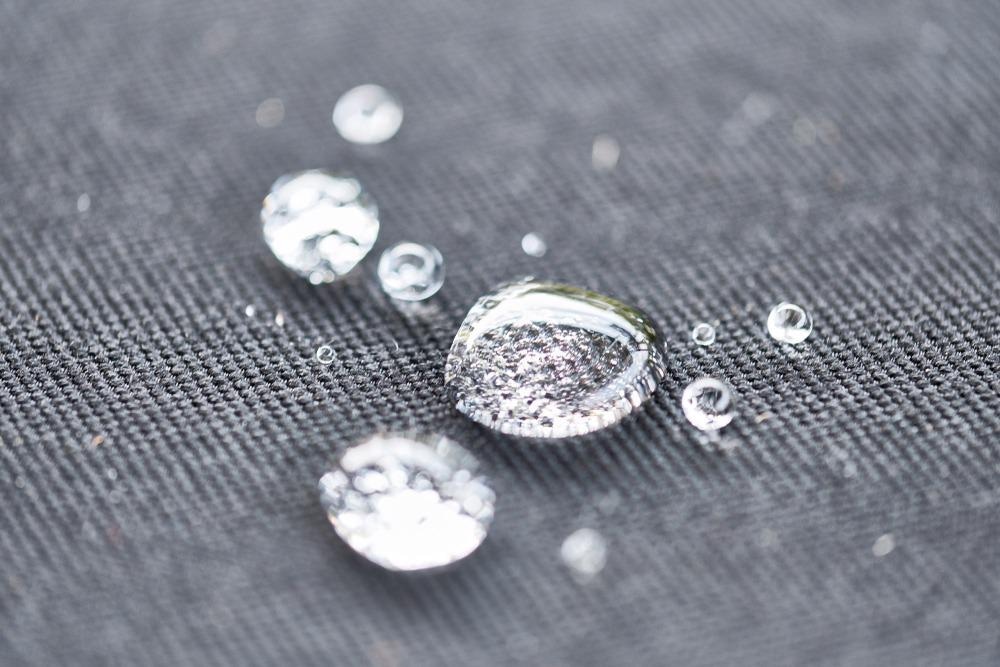How can smart fabrics be developed to thermoregulate our bodies and provide personal sweat control?

Image Credit: KULLAPONG PARCHERAT/Shutterstock.com
Perspiration evaporation is critical for heat dissipation in the human body. Traditional fabrics, on the other hand, tend to focus on sweat removal and ignore sweat's essential thermoregulation role, resulting in restricted evaporative and cooling efficacy in moderate/profuse sweating circumstances. New technology in fabric has been found, i-Cool, as written in the journal Nature Communications.
Innovative Fabric
For personal sweat control, new research suggests an integrated cooling (i-Cool) fabric with a special functional structural design. i-Cool has improved evaporation ability and high sweat evaporation cooling efficiency by properly combining heat conduction routes and water distribution channels.
The importance of human physical adaption to the thermal environment is enormous, not only because of the need for comfort but also because thermal conditions are critical for human body health. Heat-related physiological and psychological difficulties are not only dangerous to people's health, but they also have a detrimental impact on work productivity and the economy.
Metafabrics: Smart Fibers Can Shield Vehicles from Heat as Climate Changes
Personal thermal management, which focuses on the thermal conditions of the human body and its immediate surroundings, is developing as a cost-effective and energy-efficient solution.
Innovative fabrics have been devised to manage human body heat dissipation pathways without using excessive energy on maintaining the temperature of the overall environment. Heat is dissipated by the human body in four ways: radiation, conduction, convection, and evaporation.
Textiles with tailored radiative, conductive, and convective characteristics have recently been shown to be potential options for personal thermal control, particularly in moderate circumstances. Textiles for optimal human sweat or evaporation control are still absent in high-intensity circumstances.
In extreme settings such as hard exercise and hot/humid surroundings, where surplus heat cannot be dissipated properly by other channels, liquid sweat evaporation leads to even more heat loss and becomes the primary route for human body thermal transfer. However, when the human body is exposed to more extreme conditions, such as moderate/profuse sweating when liquid sweat is unavoidably present, the proper cooling of traditional fabrics must be increased.
Technology Before i-Cool
State-of-the-art textiles, particularly moisture treatment fabrics, appear to concentrate on sweat removal in order to minimize increasing wetness on the skin, which produces poorer comfort in such instances. Natural fiber textiles, such as cotton, have a high water absorption capacity, which can assist in swiftly alleviating a feeling of wetness.
Despite their lower absorption capacity, synthetic materials (with profiled cross-sections), including such polyester, have been created to convey more moisture to the fabric surface for quicker evaporation than natural fibers.
Microfibers are also being investigated for better wicking. Also presented are tactics such as surface hydrophilicity/hydrophobicity adjustment, multiple-layer design with different wettability, and architectural design of multiscale linked pores with capillary pressure gradient to provide better monitors and control water transportation.
Previous Limitations of Research on Cooling Textiles
Nonetheless, little consideration has been given to how to effectively unleash the cooling potential of sweat evaporation for human physical thermoregulation and develop fabrics based on the rules of the human physical perspiration process. Sweat is produced to evaporate and remove excess heat in the case of thermoregulation.

Image Credit: John T Takai/Shutterstock.com
Despite the fact that sweat evaporates on traditional fabrics, human flesh underneath is not adequately cooled because heat for vaporization is not efficiently taken from the skin due to inadequate heat transmission.
New Findings
As shown, a unique idea of integrated cooling (i-Cool) textiles of heat conduction and sweat transportation was developed to meet the aforementioned aims based on the human body sweating process. Heat conducting components are introduced into the textile, and the functions of thermal conduction and sweat transport are divided into two operating components.
In the i-Cool cloth, the heat conduction matrix and sweat transportation channels are combined. The two components' synergistic action results in good sweat-wicking, rapid evaporation, effective evaporative cooling for the human body, and reduced dehydration.
Sweat transport channels can take sweat water from the skin and distribute it out for evaporating in the sweat transport mechanism.
The heat-conducting matrix, on the other hand, can effectively transport skin heat to the heat-conducting matrix's integrated evaporation sites. As a result, perspiration collected in the water transportation channels may be evaporated fast into the air, removing a significant quantity of heat from the skin when paired with a wide evaporation area and effective heat conduction from the skin.
The efficient evacuation of heat from the skin improves the evaporative cooling sensation and efficiently lowers skin temperature, reducing dehydration in the human body.
Impact, Limitation, and Development
The greater evaporative cooling effect does not necessitate the production or even evaporation of additional sweat. As a result, by utilizing sweat in a highly effective manner, the i-Cool cloth can assist the human body in achieving greater cooling with considerably reduced sweat output.
We chose copper (Cu) and nylon 6 nanofibers for proof of concept based on the i-Cool functional structure design concepts stated above. Water droplets placed on the inner side of the i-Cool (Cu) may quickly be carried to the outer surface and spread out, leaving little water on the inner side.
In addition to investigating the performance limitation of i-Cool (Cu) and other conventional fabrics in high relative humidity (RH) conditions, we investigated the performance of i-Cool (Cu) and other conventional fabrics in a high ambient temperature condition.
Electronic Polymer Fibers: The Future of Clothing as a Means of Detection
The surface temperature of all the textile swatches increased as the relative humidity increased. A breakthrough i-Cool textile idea for personal sweat control with a unique functional structural design has been found.
The unique combination of integrated transport of water and heat semiconducting functional parts ensures also wicking ability, and also a quick rate of evaporation, and an improved dehumidification cooling effect. A simulated sweating skin experiment for the i-Cool (Ag) fabric in high temperatures can be used to enhance it.
References:
Peng, Y., et al. (2021). Integrated cooling (i-Cool) textile of heat conduction and sweat transportation for personal perspiration management. Nature Communications. Published: 21 October 2021. https://www.nature.com/articles/s41467-021-26384-8
Disclaimer: The views expressed here are those of the author expressed in their private capacity and do not necessarily represent the views of AZoM.com Limited T/A AZoNetwork the owner and operator of this website. This disclaimer forms part of the Terms and conditions of use of this website.